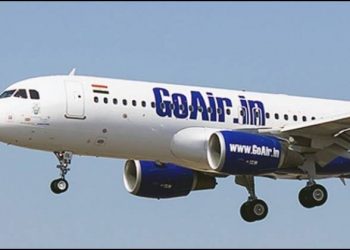NASA has smashed its record for transmitting data to and from the moon. Now, it boasts afrankly amazing 622Mbps transfer speed to the rock that circles our little planet.
NASA TO THE MOON
The Agency is able to achieve that using lasers—instead of radio waves—to transmit data between its ground station in New Mexico and a spacecraft that’s orbiting the moon, 239,000 miles away. Part of the Lunar Laser Communication Demonstration, the agency was also able to upload error-free data to the LADEE (Lunar Atmosphere and Dust Environment Explorer) spacecraft at a rate of 20Mbps.
It beats previous attempts to send data through space using similar techniques, in particular one earlier this year which saw NASA beam the Mona Lisa into space at a rather paltry 300 bits per second. The new success of the LLCD marks a major milestone in space communications: NASA has previously relied on radio frequency data links, but they’re not able to carry the quantities of data that the agency will require in the future.
So, while the LLC is currently a proof of concept, it’s hoped it will see real service soon. “We are encouraged by the results of the demonstration to this point, and we are confident we are on the right path to introduce this new capability into operational service soon,” explained Badri Younes, NASA’s deputy associate administrator for space communications and navigation. And frankly, when internet on the moon is faster than some home connections, you know the future had arrived.
NASA’s Lunar Laser Communication Demonstration (LLCD) has made history using a pulsed laser beam to transmit data over the 239,000 miles between the moon and Earth at a record-breaking download rate of 622 megabits per second (Mbps).
LLCD is NASA’s first system for two-way communication using a laser instead of radio waves. It also has demonstrated an error-free data upload rate of 20 Mbps transmitted from the primary ground station in New Mexico to the spacecraft currently orbiting the moon.
“LLCD is the first step on our roadmap toward building the next generation of space communication capability,” said Badri Younes, NASA’s deputy associate administrator for space communications and navigation (SCaN) in Washington. “We are encouraged by the results of the demonstration to this point, and we are confident we are on the right path to introduce this new capability into operational service soon.”
Since NASA first ventured into space, it has relied on radio frequency (RF) communication. However, RF is reaching its limit as demand for more data capacity continues to increase. The development and deployment of laser communications will enable NASA to extend communication capabilities such as increased image resolution and 3-D video transmission from deep space.
“The goal of LLCD is to validate and build confidence in this technology so that future missions will consider using it,” said Don Cornwell, LLCD manager at NASA’s Goddard Space Flight Center in Greenbelt, Md. “This unique ability developed by the Massachusetts Institute of Technology’s Lincoln Laboratory has incredible application possibilities.”
LLCD is a short-duration experiment and the precursor to NASA’s long-duration demonstration, the Laser Communications Relay Demonstration (LCRD). LCRD is a part of the agency’s Technology Demonstration Missions Program, which is working to develop crosscutting technology capable of operating in the rigors of space. It is scheduled to launch in 2017.
LLCD is hosted aboard NASA’s Lunar Atmosphere and Dust Environment Explorer (LADEE), launched in September from NASA’s Wallops Flight Facility on Wallops Island, Va. LADEE is a 100-day robotic mission operated by the agency’s Ames Research Center at Moffett Field, Calif. LADEE’s mission is to provide data that will help NASA determine whether dust caused the mysterious glow astronauts observed on the lunar horizon during several Apollo missions. It also will explore the moon’s atmosphere. Ames designed, developed, built, integrated and tested LADEE, and manages overall operations of the spacecraft. NASA’s Science Mission Directorate in Washington funds the LADEE mission.
The LLCD system, flight terminal and primary ground terminal at NASA’s White Sands Test Facility in Las Cruces, N.M., were developed by the Lincoln Laboratory at MIT. The Table Mountain Optical Communications Technology Laboratory operated by NASA’s Jet Propulsion Laboratory in Pasadena, Calif., is participating in the demonstration. A third ground station operated by the European Space Agency on Tenerife in the Canary Islands also will be participating in the demonstration.











